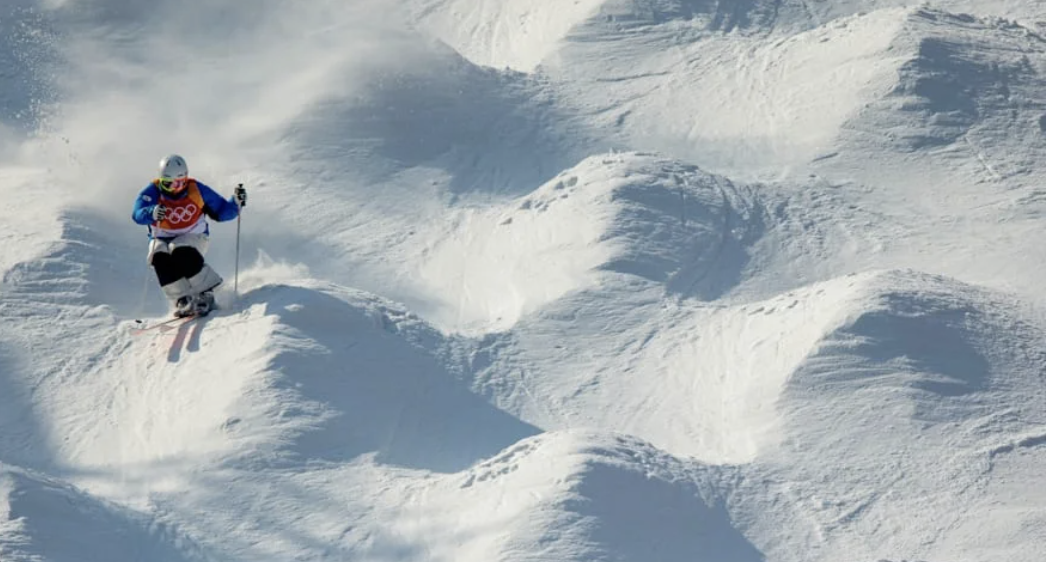Skiing With Poles vs. Skiing Without Poles: A Comparison of Techniques
Skiing with and without poles are two distinct approaches that serve different purposes, each offering unique advantages depending on the skier's goals, style, and terrain. Here’s a breakdown of when and why skiers choose to use or forgo poles.
Skiing With Poles: Stability, Control, and Efficiency
Using ski poles is the traditional approach in most forms of skiing, particularly in alpine skiing, cross-country skiing, and backcountry touring. Ski poles provide additional support, improve rhythm, and help with weight distribution.

Key Benefits of Skiing With Poles
Balance & Stability – Poles are an additional point of contact with the snow, helping you stay balanced, especially on uneven or steep terrain. They provide crucial support in challenging conditions like moguls and icy slopes.
Pole Planting for Timing & Rhythm – Pole planting is a fundamental technique that improves turn initiation and helps maintain rhythm, particularly for carving turns and short-radius turns in slalom skiing. Proper pole use can make turns smoother and more controlled. Weight Distribution & Edge Control – Poles help distribute weight between your skis and arms, allowing you to pressure the edges effectively during turns. This helps control speed and enhances carving performance.
Propulsion & Acceleration – Skiers use poles to push off the snow when starting, accelerating, or moving on flat terrain and gentle inclines. This is particularly helpful in cross-country skiing and traversing across long, flat sections in alpine skiing.
Turning & Steering Assistance – In technical skiing, poles act as guides to initiate turns and improve coordination between upper and lower body movements. This is especially useful in steep terrain, tree skiing, and moguls.
Essential for Cross-Country & Touring – In cross-country skiing, poles play a crucial role in propulsion. They provide power in diagonal stride, skate skiing, and double poling techniques, making movement more efficient. Similarly, in backcountry skiing, poles help maintain balance while navigating deep snow and skinning uphill.
Safety & Recovery Aid – Poles can assist in recovering from an off-balance moment, helping prevent falls. They can also be used to probe snow depth, test for hidden obstacles, or assist in getting up after a fall.

Who Benefits Most from Skiing With Poles?
Beginner to Intermediate Skiers – Provides stability and helps develop proper turning techniques.
Alpine Skiers – Essential for navigating varied terrain, improving carving, and maintaining rhythm.
Backcountry & Touring Skiers – Crucial for balance, propulsion, and navigating deep snow.
Cross-Country Skiers – Primary tool for movement and propulsion.
Mogul & Technical Skiers – Helps with timing and precise turning.

Skiing Without Poles: Agility, Freedom, and Style
While skiing with poles is the norm for many disciplines, skiing without poles is common in freestyle, terrain park, and some off-piste skiing styles. Some skiers also find that going without poles helps develop better technique by emphasizing balance and lower body movement.

Key Benefits of Skiing Without Poles
Freestyle & Terrain Park Freedom – Many freestyle skiers, particularly those performing tricks, jumps, rails, and halfpipe maneuvers, prefer skiing without poles. Poles can be restrictive and interfere with aerial movements, grabs, and spins.
Enhanced Agility & Movement – Without poles, skiers have greater upper-body freedom, allowing for more fluid movements, especially in dynamic skiing styles like buttering, switch skiing, and jibbing.
Focus on Lower Body Technique – Removing poles forces skiers to rely more on leg positioning, weight shifts, and core balance, leading to improved control in turns and edge transitions. This can be beneficial for developing better technique, especially for beginners.
Reduced Weight & Simplicity – Skiing without poles eliminates extra weight, which some skiers find preferable for increased mobility and a more natural skiing experience.
Adaptive Skiing & Alternative Disciplines – Some adaptive skiers or those with certain physical limitations may choose to ski without poles or use modified equipment. In some cases, skiing pole-less is part of a personal style or aesthetic preference, as seen in certain telemark skiers who opt for a minimalist approach.

Who Benefits Most from Skiing Without Poles?
Freestyle & Terrain Park Skiers – Offers freedom for tricks, jumps, and spins.
Beginner Skiers – Encourages reliance on lower body balance and proper stance.
Backcountry Skiers in Tight Trees – In deep powder or tight spaces, some skiers prefer no poles for a more fluid motion.
Adaptive Skiers – Individuals with specific needs may find pole-less skiing more accessible.
Personal Style Skiers – Some skiers simply prefer the feel of skiing without poles.

Which Approach Is Right for You?
The decision to ski with or without poles depends on your skill level, skiing style, and terrain preferences. Here’s a quick guide to help you decide:
Factor | Skiing With Poles | Skiing Without Poles |
Balance & Stability | Strongly Recommended | Requires more natural balance |
Carving & Technical Skiing | Helps with rhythm & timing | More reliance on lower body technique |
Freestyle & Terrain Parks | Can be restrictive | Preferred for tricks & jumps |
Moguls & Steep Terrain | Essential for timing & turns | More challenging without poles |
Backcountry & Powder | Helps with deep snow navigation | Some skiers prefer without poles |
Cross-Country & Touring | Required for propulsion | Not recommended |
Beginner Learning | Provides support & confidence | Helps focus on stance & edge control |
Adaptive & Alternative Skiing | Optional, based on needs | Some prefer without poles |
If you're skiing alpine, cross-country, or backcountry, poles provide valuable stability, control, and propulsion.
If you're into freestyle, park, or terrain-based skiing, going without poles enhances agility and trick execution.
Beginners may find poles helpful for balance, but skiing without poles can also improve foundational skills by emphasizing lower body control.
Ultimately, the best approach depends on your personal preference and skiing goals. Experimenting with both techniques in different conditions can help you develop a well-rounded skill set.
Poles or no poles, and enjoy the slopes!
